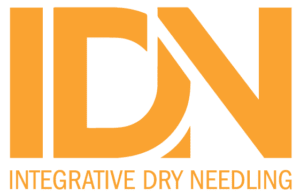Methodological considerations for dry needling trials in medial tibial stress syndrome
J Man Manip Ther. 2025 Dec 2:1-2. doi: 10.1080/10669817.2025.2595629. Online ahead of print. NO ABSTRACT PMID:41328671 | DOI:10.1080/10669817.2025.2595629
Home / My Account / Dry Needling Research
Authors:
Garrett Koehn, Lexi Jackson, Elizabeth Ablah, Hayrettin Okut, Andrew Porter
Kans J Med. 2023 Oct 30;16:258-260. doi: 10.17161/kjm.vol16.18511. eCollection 2023.
ABSTRACT
INTRODUCTION: Overuse injuries such as tendinosis are a common complaint at sports medicine clinics. When conservative management for tendinosis has failed, ultrasound-guided tendon fenestration and injection procedures, such as dry needling, needling tenotomy, autologous whole blood injections, and prolotherapy, can be utilized for treatment. This study examined the effectiveness of these procedures for pain improvement and ability to return to activity for patients with tendinosis.
METHODS: This study involved a chart review of patients 15 years or older who underwent at least one treatment for tendinosis at a sports medicine clinic between January 1, 2014 and April 17, 2019. Eligible patients had at least one of the following procedures: 1) percutaneous dry needling, 2) percutaneous needle tenotomy, 3) autologous whole blood injection, and/or 4) prolotherapy. A Current Procedural Terminology (CPT) code query was used to screen patient charts for study inclusion.
RESULTS: In total, 680 patients’ data were reviewed, and 343 patients met inclusion criteria. Patients underwent a total of 598 unique procedures. Dry needling represented most procedures (62.8%, n = 375). Most patients reported diminished pain at follow up (73.0%, n = 268). Prolotherapy had the highest percentage among the follow up patients reporting diminished pain (81.0%, n = 17). Most patients were able to return to activity at follow-up (47.4%, n = 172). A greater proportion of patients with autologous whole blood injection were able to return to activity (60.7%, n = 85).
CONCLUSIONS: Most patients with tendinosis who underwent tendon fenestration or injection procedures reported diminished pain at follow-up. Autologous whole blood injection may be more likely to diminish patient pain and allow return to activity than other procedure types. More research is needed across all anatomical sites to compare the generalized effectiveness of these procedures.
PMID:37954879 | PMC:PMC10635684 | DOI:10.17161/kjm.vol16.18511
J Man Manip Ther. 2025 Dec 2:1-2. doi: 10.1080/10669817.2025.2595629. Online ahead of print. NO ABSTRACT PMID:41328671 | DOI:10.1080/10669817.2025.2595629
J Man Manip Ther. 2025 Nov 29:1-10. doi: 10.1080/10669817.2025.2591677. Online ahead of print. ABSTRACT OBJECTIVE: Clinical guidelines recommend combining exercise with other
J Bodyw Mov Ther. 2025 Dec;45:493-501. doi: 10.1016/j.jbmt.2025.08.015. Epub 2025 Aug 31. ABSTRACT OBJECTIVE: Myofascial pain syndrome (MPS) is a chronic musculoskeletal
© Integrative Dry Needling 2025 | All rights reserved | Designed by Weblink
any IDN Course!
*Valid for new registrations only and can not be combined with other discount codes. Offer Expires: 7/7/2024

Not sure which course is right for you? No problem – we created an intuitive process to help!